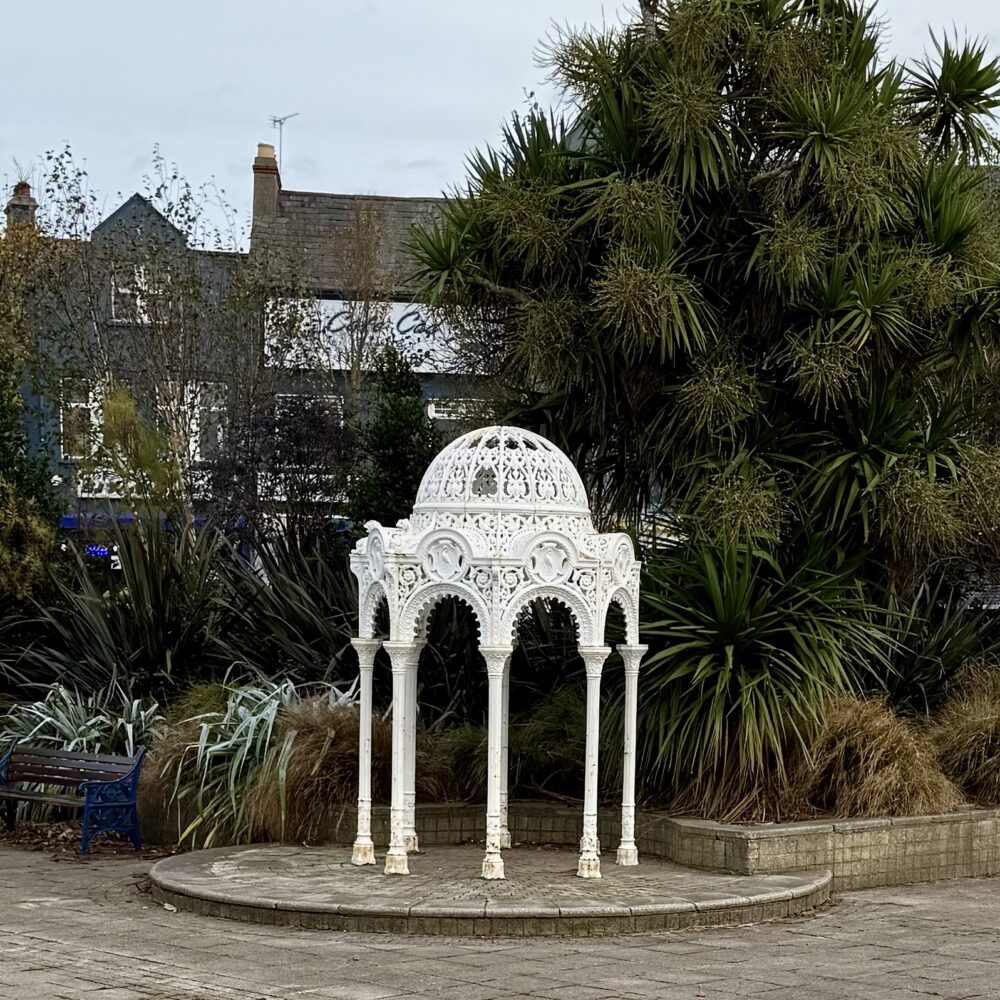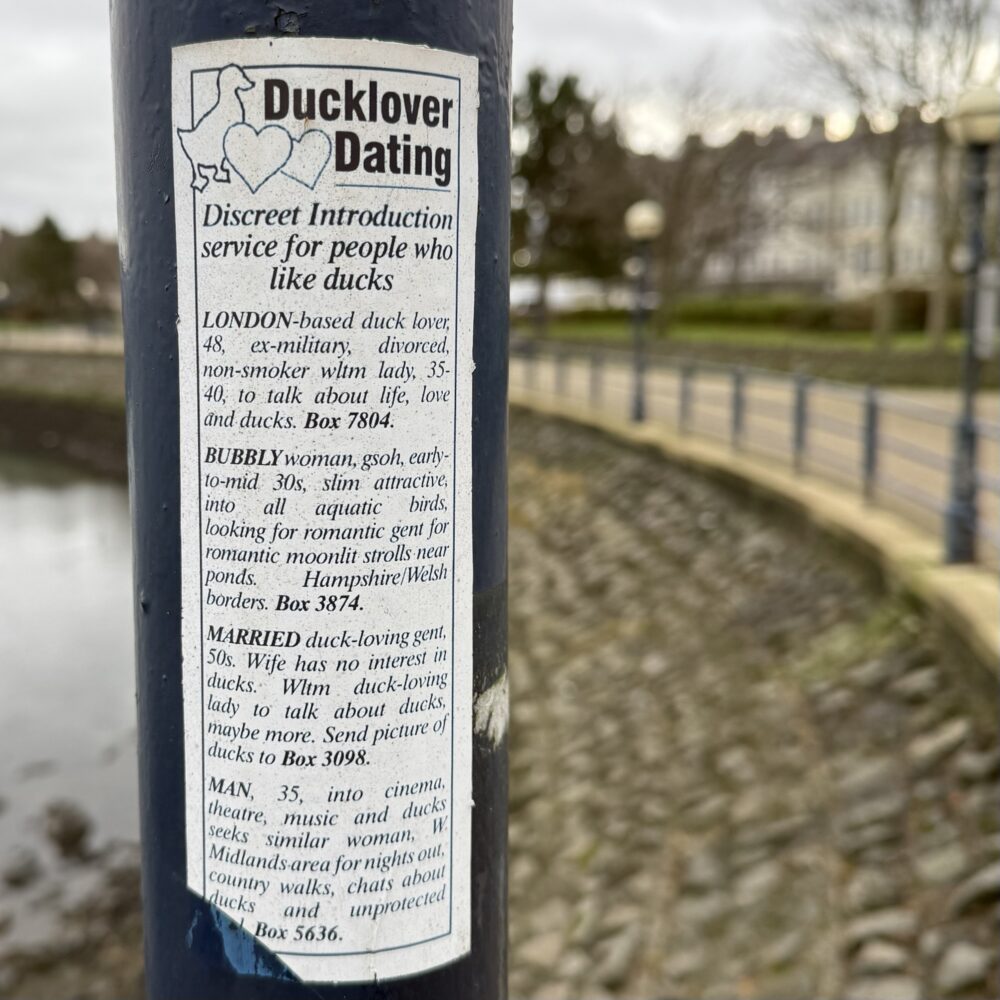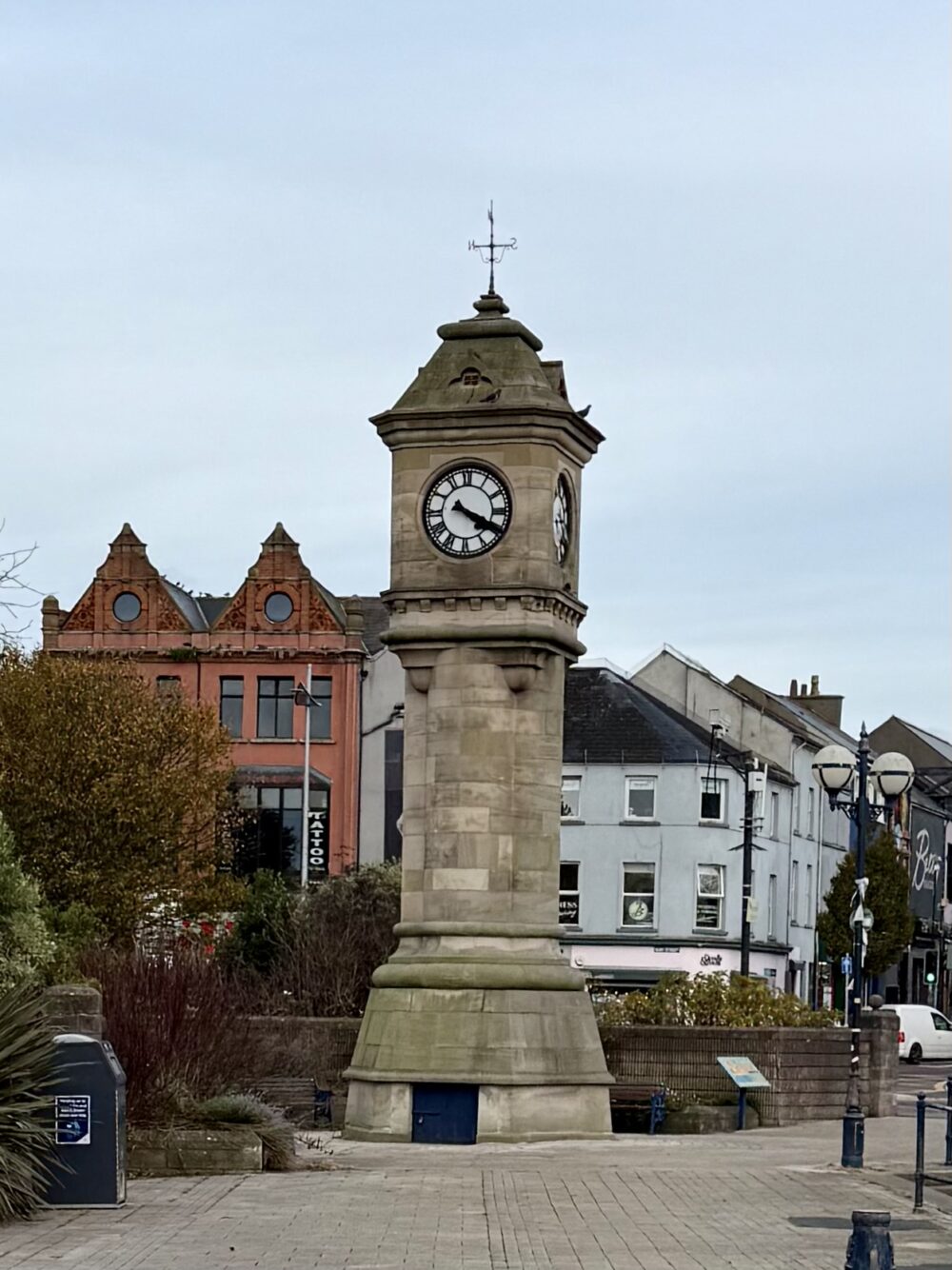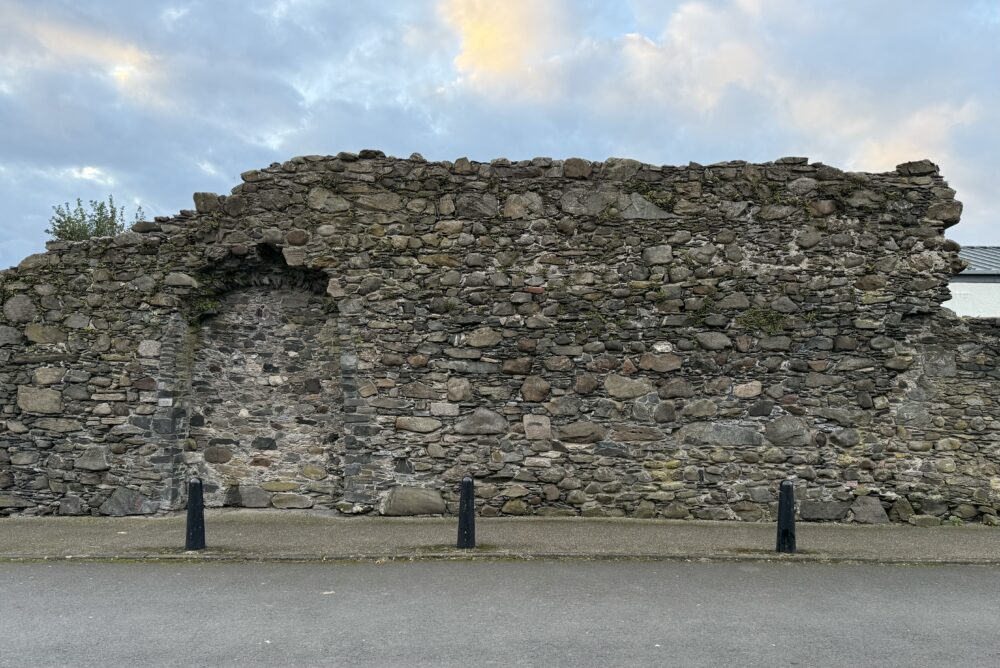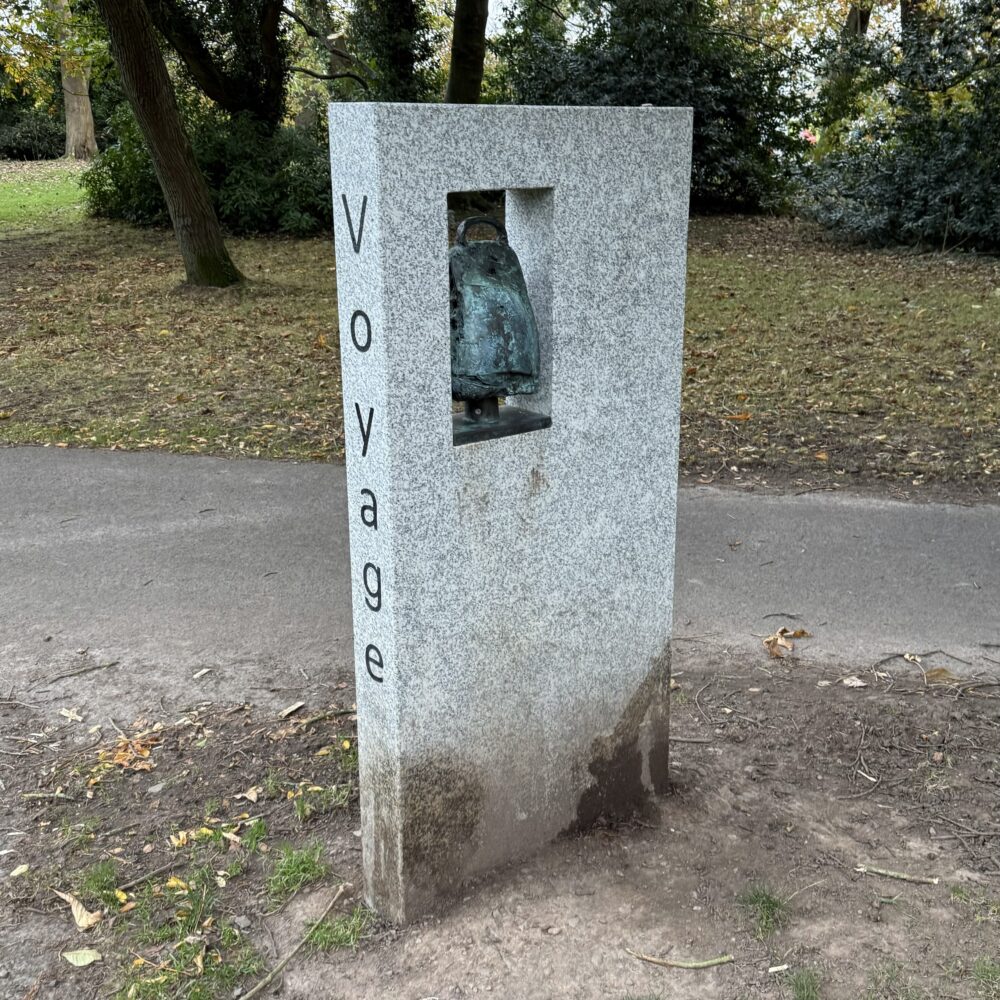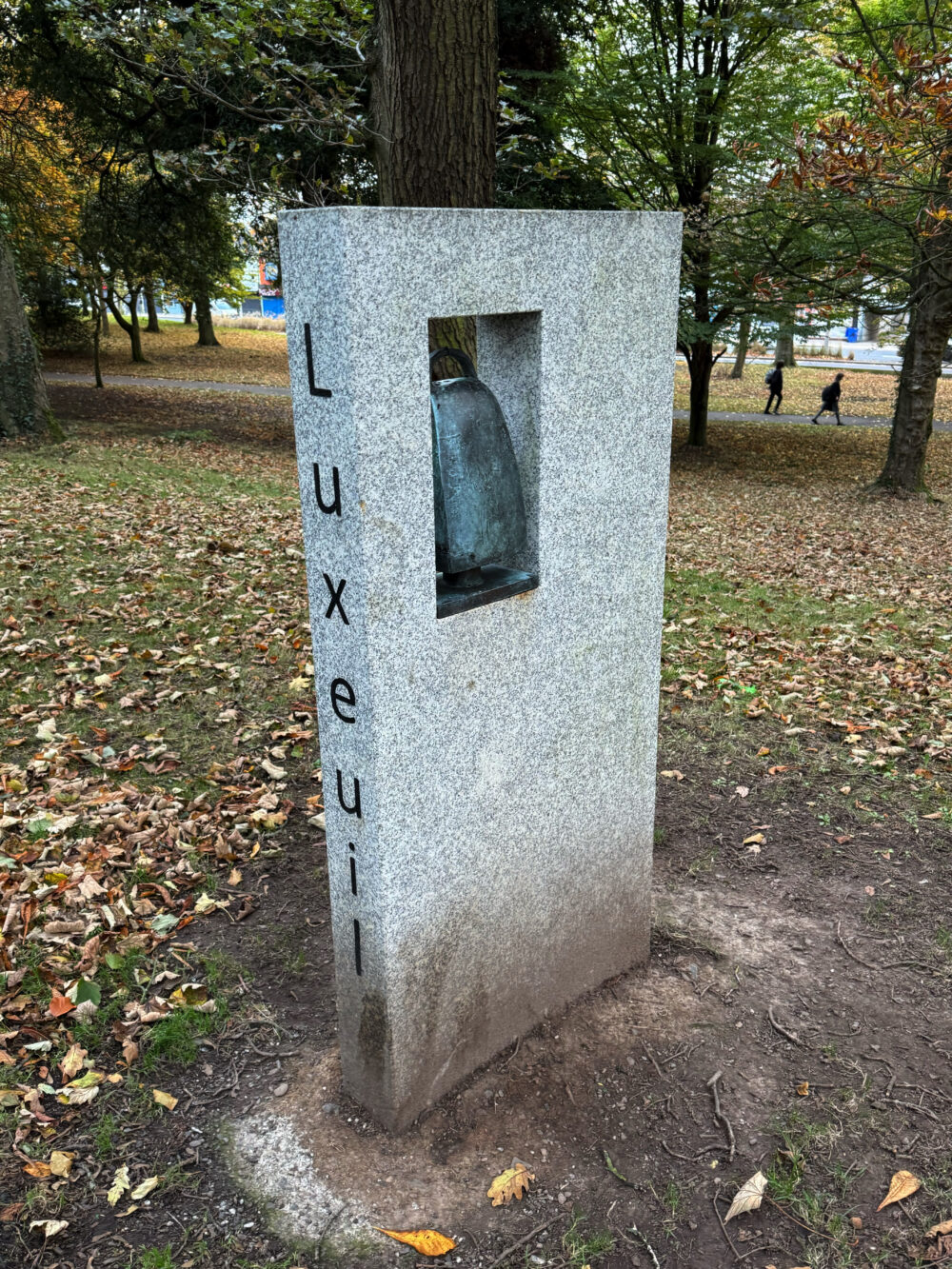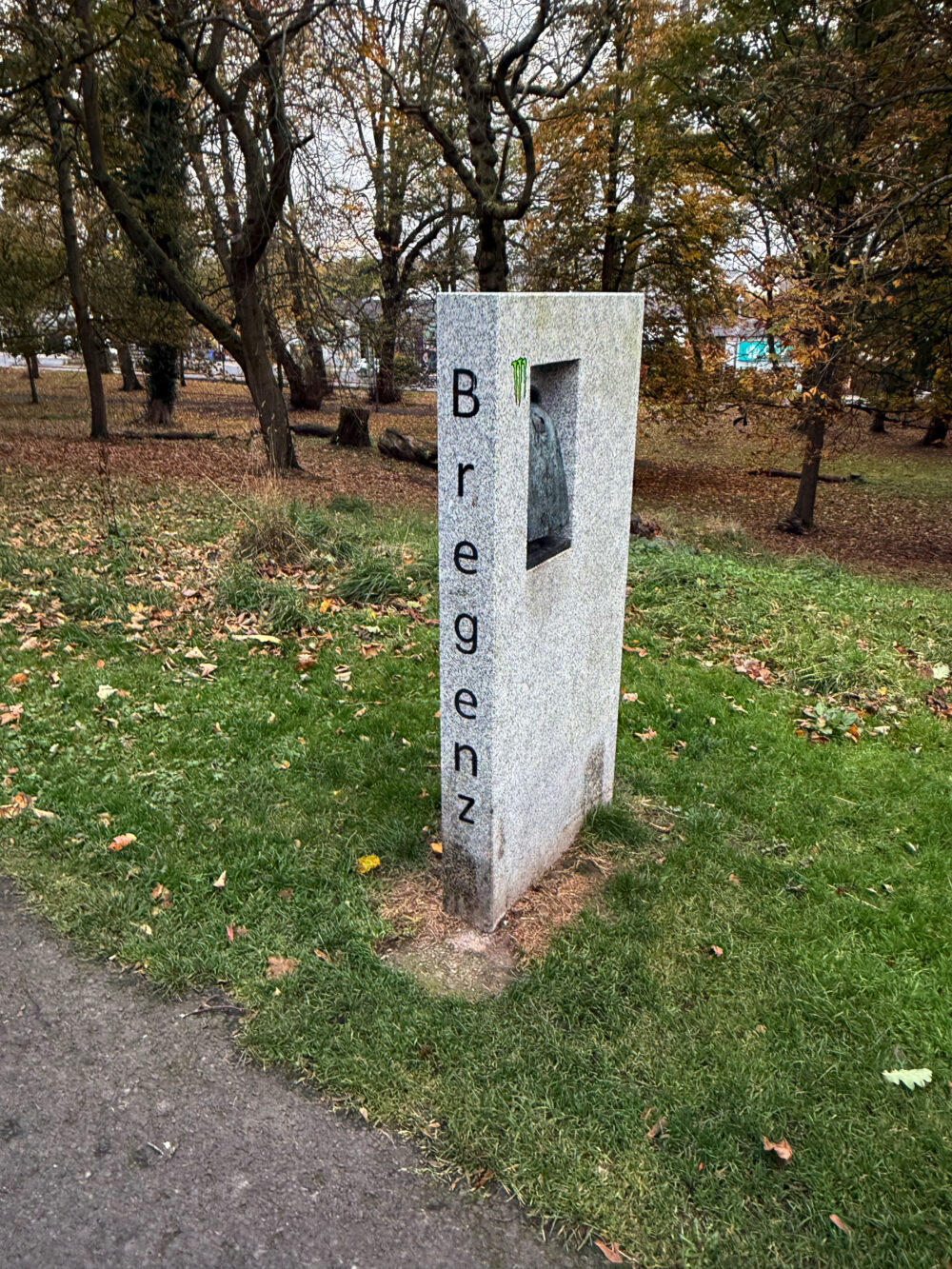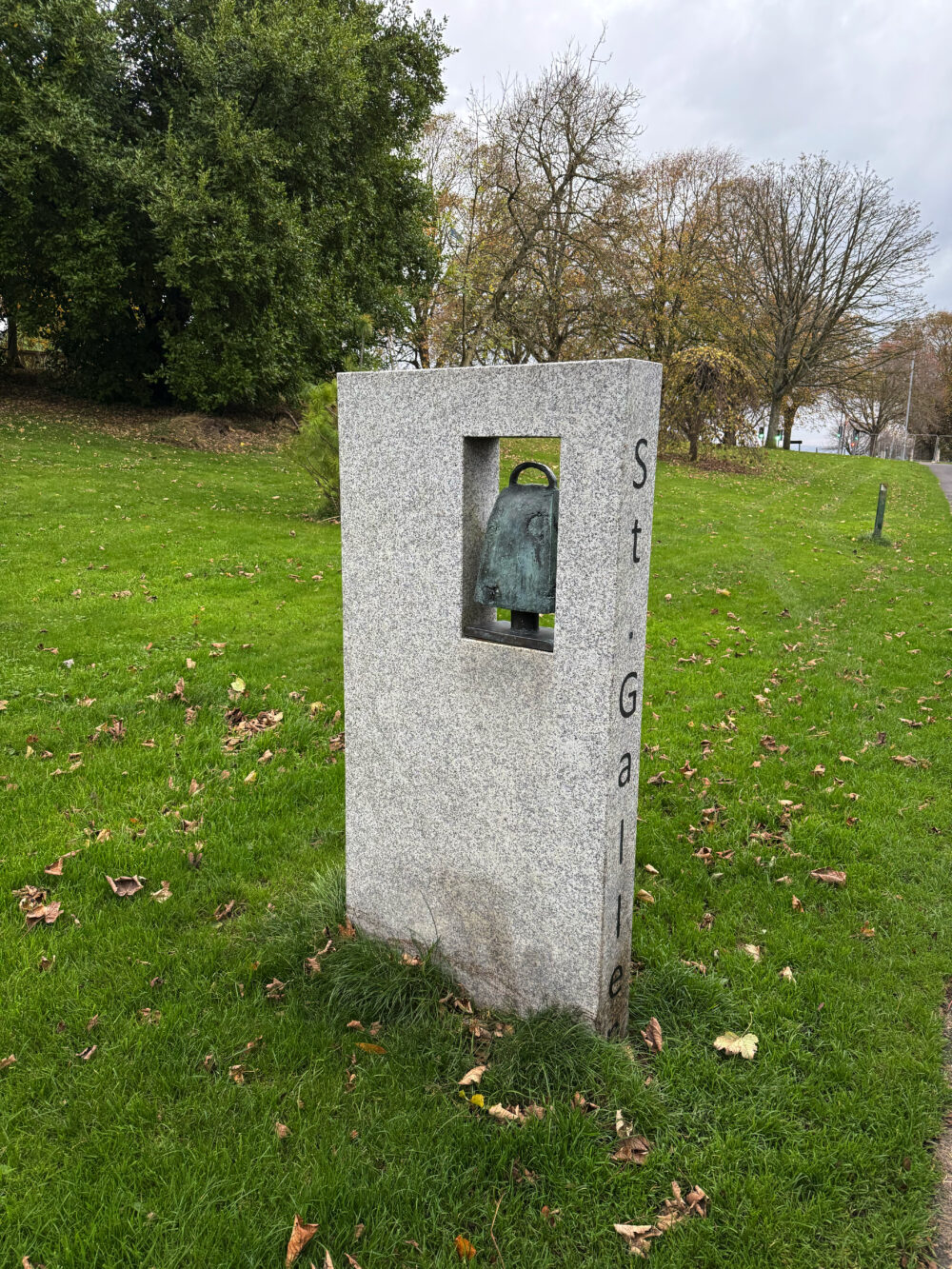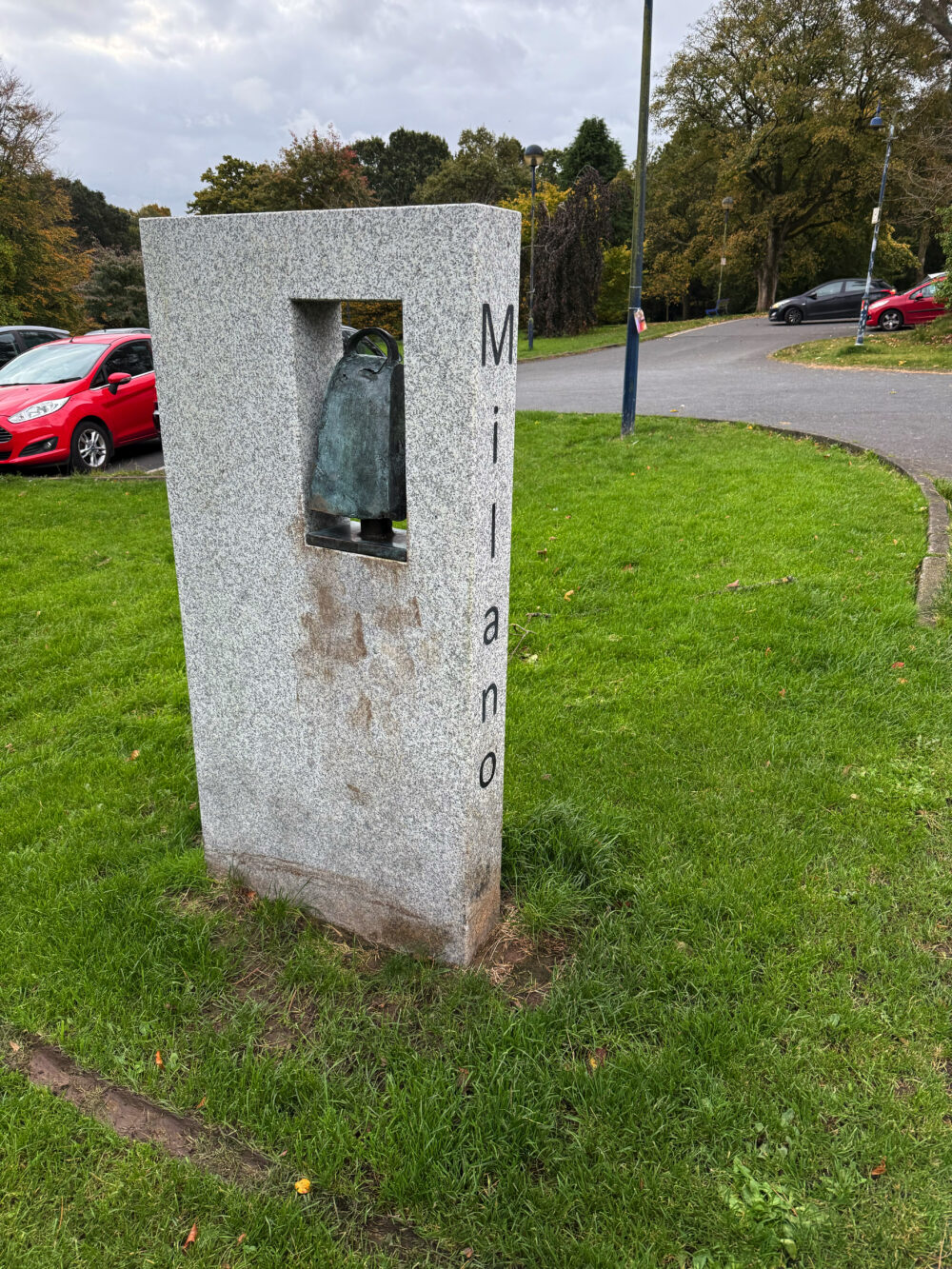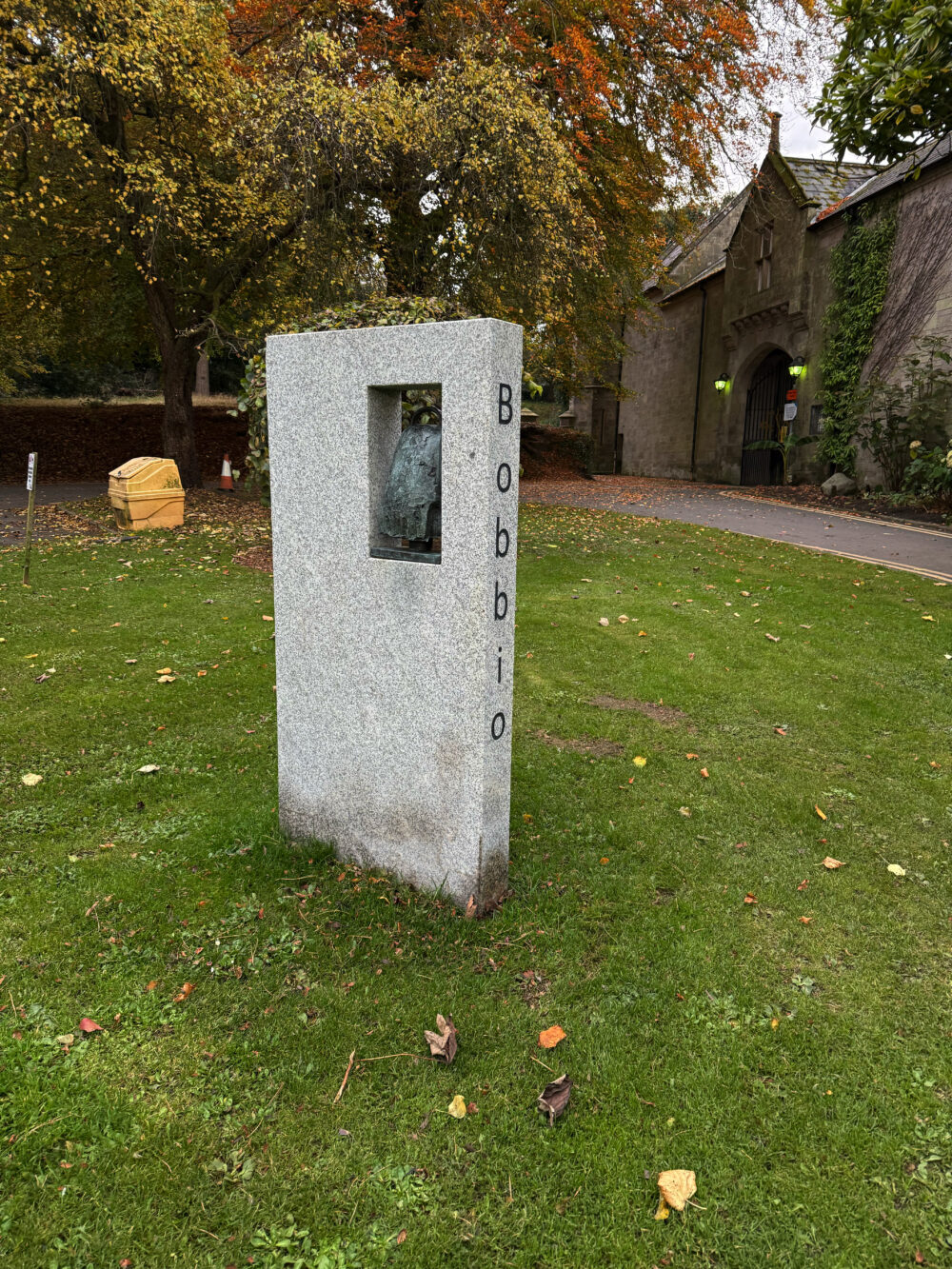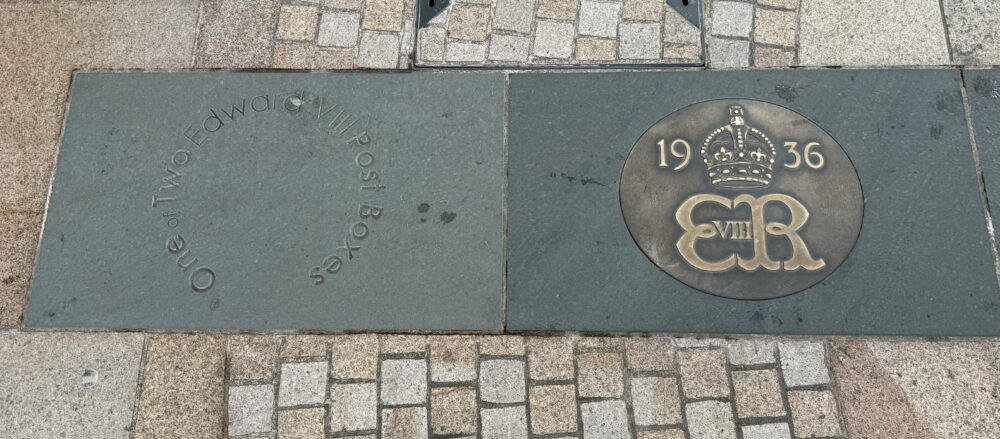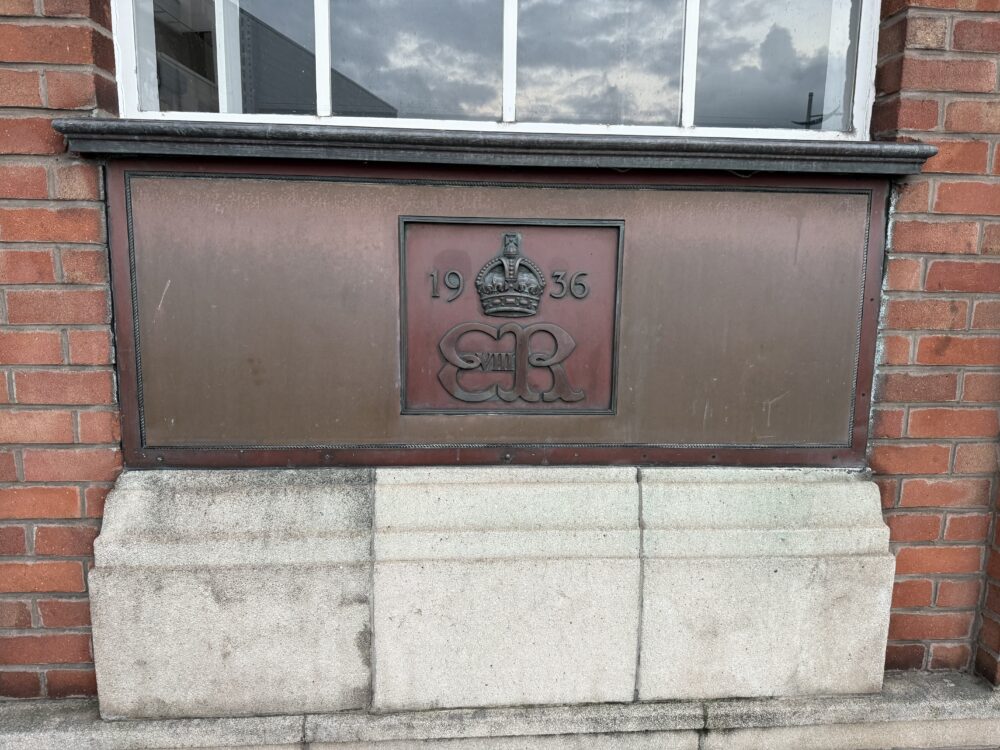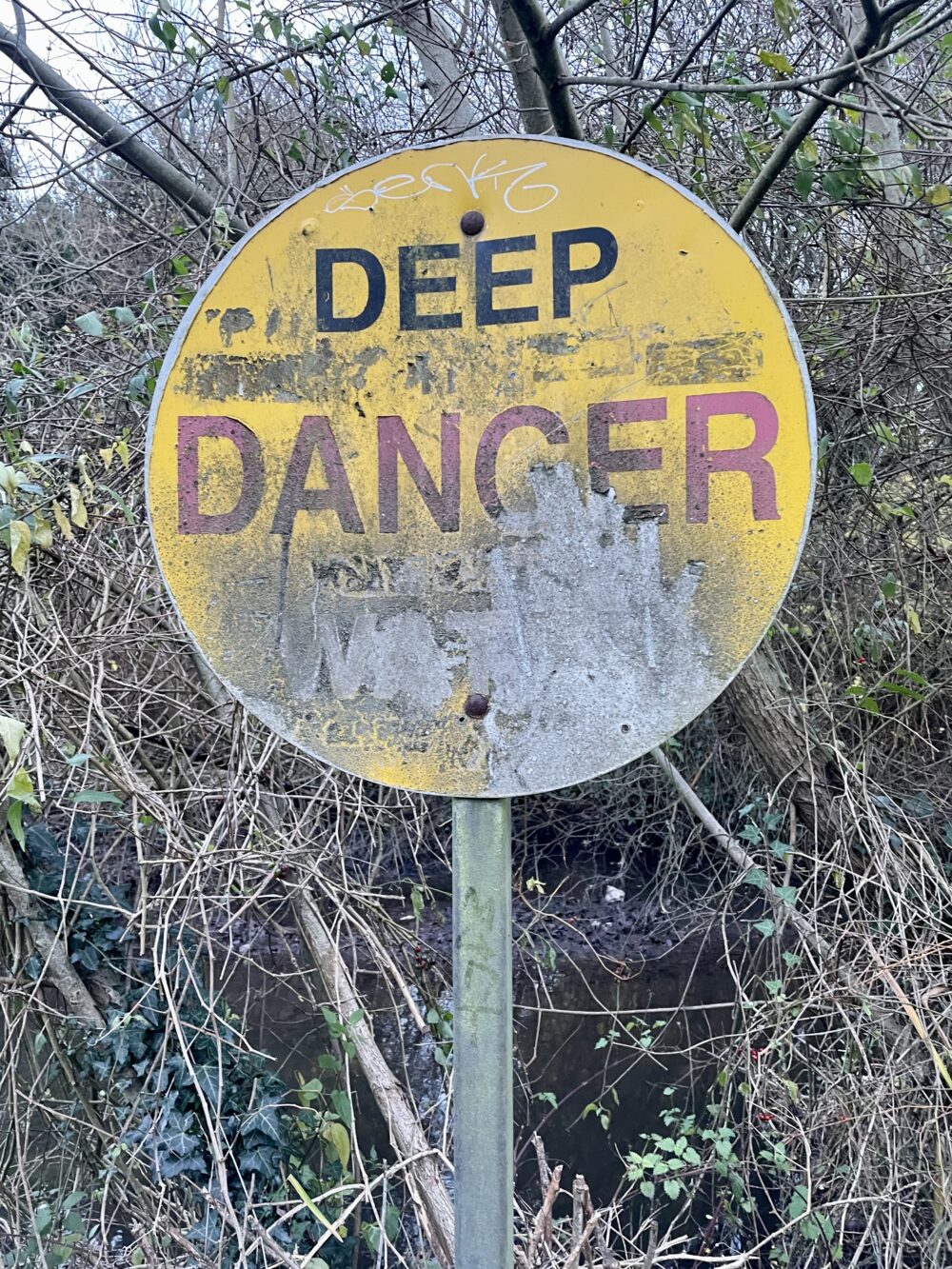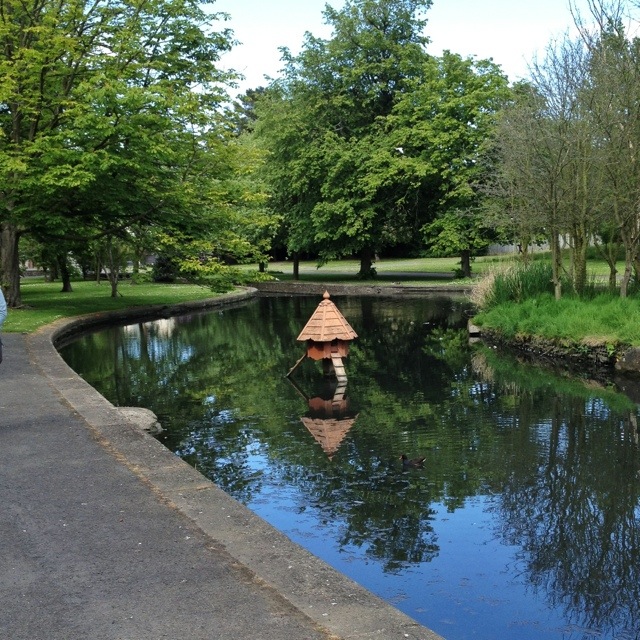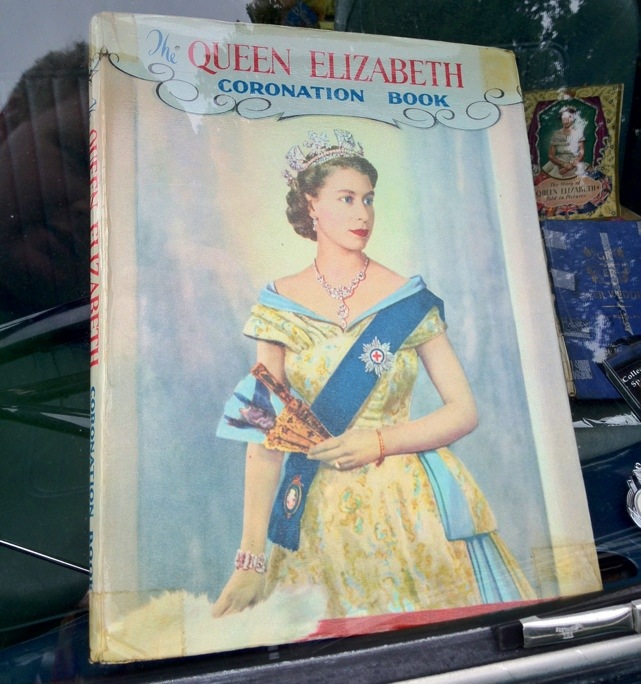It might be All Saints’ Day today, but I’m afraid I’m picking on just one of their number: St Columbanus, who walked this Earth back in the 500s AD.
He seems to have been a bit of a character: it is said that squirrels used to run down from trees and into the folds of his cowl to be close to him. I think this is supposed to be charming, but it frankly sounds like a massive hassle: he clearly had a lot to contend with.
His life is commemorated through a trail of seven bells in Bangor: the squirrels might have left him alone in death, but the Northern Irish are still keen to knock seven bells out of him. Poor guy.
And, as a rubbish blogger, I’ve only managed to take pictures of six of them. The first one of the trail is a giant bell, and I didn’t notice it, because I was too preoccupied with this: the oldest wall in Bangor:
The commemorative plaque omits to tell us when it was built, beyond a vague ‘13th century’, but it does let us know that the Council did some work on the wall in 2008.
Anyway, this means I can’t show you the first stop on our ‘interpretive art trail’ (not my words). So you’ll just have to imagine a giant bell with a wavy surface, commemorating Columbanus’s childhood journey across Lough Erne to the Island of Cleenish for his early education.
After leaving Cleenish, Columbanus went to Bangor Abbey… a time which is weirdly not commemorated on this Bangor trail. Instead, the second stop on our journey records him leaving Bangor to travel to Brittany.
While in Brittany, Columbanus worked to ‘root out the lusts of the flesh’. I imagine that being covered with squirrels might have helped with that.
He also founded a school in a former Roman fortress in the mountains. It became so oversubscribed that it eventually needed new premises, which he founded at Luxeuil:
While there, he met Gallus—another monk who had been taught at Bangor Abbey—who began to follow him. He originally came from somewhere on the French/German border, which will become important later.
The bells then seem to skip the bit of Columbanus’s life where he hid in a cave for a few years in search of solitude. They also have nothing to say about his spat with some bishops over the date of Easter: he wrote to Pope Gregory I and Pope Boniface IV on the point. Gregory ghosted him, and he folded before Boniface could reply.
I think this is a fascinating bit of his story, with much to say about the interaction between the divine and the human in the making of Christian festivals, and I’d definitely have dedicated a bell to it, but I’ve never been asked to make even one interpretative artistic bell in my entire life (to date).
Anyway, we skip ahead to Columbanus being thrown off a ship following a storm. The captain judged that the storm was god’s punishment for transporting Columbanus. Columbanus ended up at Bregenz in Austria, where he built an oratory:
And this is where Gallus’s heritage becomes important: as he could speak the local language, he played a big role in helping Columbanus convert the locals to Christianity.
And—local connection alert—Bregenz was twinned with Bangor in 1987 ‘in celebration of this important historical connection’ (not my words).
Since 2001, Bangor has also become a ‘sister city’ of Virginia Beach in the United States, though I regret to report a lack of connection to Columbanus. This relationship exists ‘because of the similar port area, military affiliation, and oceanfront tourist attraction’.
Back to Columbanus, whose time at Bregenz wasn’t going so well: a war had resulted in the area being subsumed into Burgundy, and a few of Columbanus’s students had been murdered. So, like any man of God, Columbanus prayed hard for a peaceful resolution and stayed to help defend his adopted community ran off to Italy.
Gallus, however, stayed behind, in hiding in a little cell. Eventually, long after his death, an abbey was built in his honour. Little-by-little, the Swiss city of St Gallen grew up around it, and, in 1983, the abbey area became a UNESCO World Heritage Site.
Oh, and there’s also this:
Meanwhile, Columbanus was living it up in Milan, where he was welcomed by the King and Queen of Lombardy. He once again set about converting the locals:
The Bangor Antiphonary, a historically important 36-leaf book of hymns and prayers put together in Bangor Abbey about a century after Columbanus’s death is somewhat inexplicably in Milan, though no-one seems particularly vexed by that. I suppose to many in Northern Ireland, it’s better than it being in one of the London museums, where it would probably have ended up had it not been taken abroad. Maybe they’d have loaned it back to the locals occasionally, like the Lindisfane Gospel.
The King of Lombardy gave Columbanus a tract of land at Bobbio, near Milan, to build a monastery—where, ultimately, Columbanus died and was buried:
Twenty years after Columbanus’s death, Jonas of Bobbio wrote a biography of him—the first known biography of an Irish person. And in 2002, because of his history of travelling through Europe, the Vatican declared St Columbanus to be the patron saint of motorcyclists… which honestly feels like a stretch.
But as for the bells—well, I think that we have to count them as a success. I’d never heard of the bloke before I saw them, and now know I’ve written (and you’ve read) a 1,000-word treatise about him.
And that’s the power of interpretative art trails… maybe.
